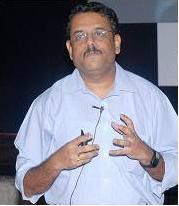Service Culture
Transformation:
|
Command & Control Culture
|
Service Culture
|
|
|
Art of Service: Vision & Strategy
|
||
|
1
|
Service Strategy
grounded in Winning@ any cost driven by self
centered vision, power & control.
|
Service Strategy
is grounded in creating value for customers driven by shared service Vision & Values.
|
|
2
|
Growth by beating
the Competition with incremental
differentiation.
|
Growth by Going
beyond the competition with quantum differentiation & Value innovation.
|
|
3
|
Build a brand by
Showcasing numbers, certifications and
position for looking good.
|
Build a brand
for Customer loyalty by being good and
creating value/wow experience.
|
|
4
|
Defensive teams avoiding mistakes, risks and conflicts for fear of losing.
|
Collaborative &
Open teams leveraging on the gaps,
conflicts and learning from mistakes.
|
|
Science of Service: Go beyond People & Process Capabilities
|
||
|
5
|
Functional,
Regional & HQ focused Silos with
ownership limited to Fixing problems &
SLA’s.
|
Integrated teams with clear goals & roles and overall Ownership right from framing problems to
closure.
|
|
6
|
Deep
expertise equipped with knowledge & tools
with no interest in broader context.
|
Deep
& Broad expertise with collaborative &
creative problem solving skills.
|
|
7
|
Policies &
Processes are force fitted from quality manuals for audit Compliance & certification.
|
Go beyond
Process with a Questioning mind and drive operational Excellence and Value Creation.
|
|
8
|
SLA’s &
Metrics are internal facing to improve Speed
& Volume, focus is on Events &
contracts.
|
SLA’s &
Metrics address Value creation & customer
experience, focus is on Analysis &
improvement.
|
|
Craft of Service: Shaping the Service Culture
|
||
|
9
|
Disconnect in Saying Vs Doing, Know It All… No
room for learning from others.
|
Connect Saying & Doing, Space for creative tension, Learn from Gap, Adapt to Changes.
|
|
10
|
Conform to central policies, decisions, formality (calendar?). Discuss only
results, reports, Yes for Authority, no
for Undiscuassables.
|
Empowered,
Collaborate: Listen, Observe, Share, Inquire to
solve problems, Innovate. Accept
conflicts and Undiscuassables.
|

